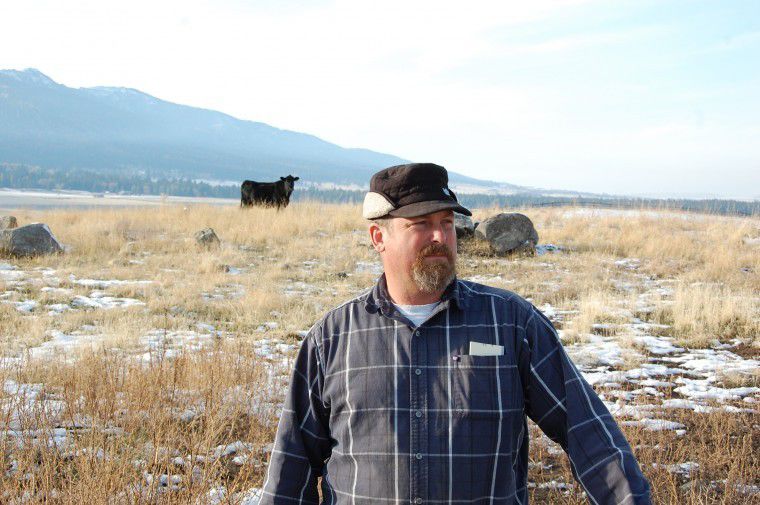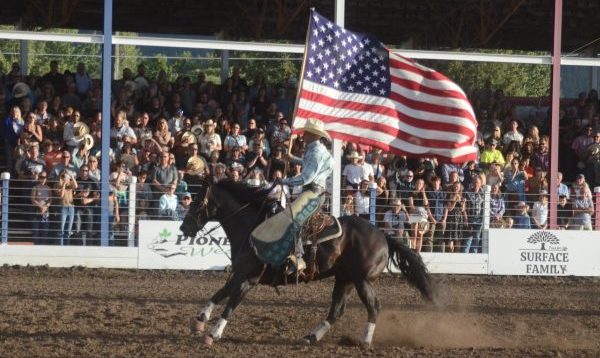Rancher is point man in the field
Published 4:00 pm Tuesday, December 27, 2011

- <p>Todd Nash is a rancher in Northeast Oregon and president of the Wallowa Stockgrowers Association.</p>
Todd Nash arrives in a Ford F-350, his surefooted cow dogs Billy and Rudy surfing the flatbed as the truck wheels to a stop in the gravel parking lot outside the pole barn he calls the ranch office.
He exits the cab in a cold weather cap with ear flaps, looking more logger than rancher, an echo of his past before life with Marr Flat Cattle Co. Nash runs as many as 2,000 head in peak season on 10,000 private acres and 70,000 acres in the Wallowa-Whitman National Forest.
Trending
“The challenges of an operation this size and as many acres as there are to cover, I enjoy that, though sometimes it’s overwhelming,” he said.
The thought sometimes occurs, usually in the saddle, he said, that there’s nowhere else he’d rather be.
To the west, behind the ranch office, rise the Wallowa Mountains, draped in mist and the smoke of wood fires issuing from forest cabins. To the east, the ground slopes away to pastures dotted with Nash’s black Gelbvieh hybrids, eventually coming to the town of Joseph. Deer, common as stray cats, loiter on lawns and back streets. Farther on is the “wolf highways,”?the Zumwalt prairie and the steep canyon country that drains into the Imnaha River.
Nash, 49, in spring and summer runs his cattle in that territory north and east of Joseph. A longtime rancher, he serves as president of the Wallowa Stockgrowers Association. He’s lost stock to wolves. All that puts him front and center as the Imnaha wolf pack preys upon area livestock and the state stands idle, its hands tied by a lawsuit filed in Salem by conservationists. Wolves have killed 20 livestock animals since spring 2010, according to the Oregon Department of Fish and Wildlife. Ranchers said they believe wolves have killed many more than that.
They carry economic and political weight in Wallow County. Cattle constituted a $21.6 million portion of its economy in 2010, by far the largest piece of the agricultural sector, according to the Oregon State University county reports. Hay and forage was next closest at $14.5 million in value. Wolves represent a threat to the ranchers’ bottom line, but they are far from the most egregious threat to livestock. That distinction belongs to disease and other health-related factors.
“Pneumonia is the biggest killer,” Nash said. “But … this is the difference, to purposely have something out there that literally rips these things apart is unacceptable. We’re put in a place where we can’t vaccinate against that.”
Trending
The fish and wildlife department confirmed that Nash lost at least five livestock animals to wolves since 2010. He believes, like other ranchers, that his loss is far larger. In fall 2009, when time came to wean calves from their mothers, he counted about 20 cows without calves, about four times the loss he expected, he said. Those animals simply disappeared into the landscape. But when carcasses turn up in pastures and summer ranges, the evidence that wolves are responsible is often hard to come by.
Nash, like other ranchers, said livestock behave differently with wolves in the area, he said. During round up, Nash said, he typically gathered 90 percent of about 200 head he grazed in a public allotment along Big Sheep Creek. On horseback, with a couple of cow dogs, he said, he rode the rough, timbered 10-mile stretch gathering up his herd in 2009.
“You whoop and holler and send your border collies through and they pick cattle out for you and you go down this corridor and you get to the end and you see what you’ve got,” he said. “I got to the end and, wow, where’s all my cows?”
Of the 200, he said, 54 showed up at first. The remainder were dispersed over a much wider area, out of fear of wolves, he said. He described finding his animals bunched up rather than spread across their grazing area or fenced pastures. In 2010, Nash said, he lost the equivalent of $80,000, a total of all the extra labor, time and fuel involved in dealing with wolves, as well as the actual value of the missing calves and cows.
Other ranchers see Nash, and Rod Childers, 55, a Wallowa County rancher who chairs the wolf committee of the Oregon Cattlemen’s Association, as stand-up guys who represent their interests to a wider world of politicians, wolf advocates and media.
“I think people like Todd Nash and (Wallowa County Sheriff) Fred Steen are doing an excellent job about keeping their emotions out of this,” said rancher Willy Locke, 59. Steen sides with ranchers who believe the state is loathe sometimes to call a dead calf or cow a wolf kill, and sympathizes with ranchers who feel unjustly barred from defending against wolves who prey on their cattle on their own property.
Rancher Mark Dawson, 58, of Wallowa, recalls Nash’s father purchasing 4-H calves from him years ago. He thinks of Nash as a good neighbor who helped out with ranch chores when Dawson broke his pelvis two years ago.
“He’s a square shooter,” Dawson said. “If he says it, it’s happened.”
The opposition sees Nash in a different light. He’s associated with a reactionary response to anything to do with wolves, usually a reaction that calls for eradicating wolves and silencing those who advocate for them.
“He has certainly been a rhetorical firebrand,” said Steve Pedery of Oregon Wild, a conservation group that along with two others in October filed suit to stop the state from killing two wolves of the Imnaha pack. The suit arose just as state authorities tracked two wolves that killed one of Nash’s calves. Until the suit is resolved, the state is barred from killing wolves, which continue to prey upon livestock in the ranges and pastures around Enterprise and Joseph.
Pedery cites a recent clash at the county planning commission over an application to open a bed and breakfast. Anti-wolf voices, Nash’s included, objected, based partly on the fact the petitioners, Diana and James Hunter, had hosted members of Oregon Wild at another of their properties. Some also objected that a bed and breakfast was an improper use of the property.
Nash and Childers, Pedery said, make a pretense of supporting non-lethal measures the state wolf management plan mandates that ranchers undertake to deter wolves before the state wildlife department may kill problem wolves.
“We’ve seen comments like this from Todd Nash: Non-lethal is something we do to get to lethal,” Pedery said.
Ranchers have been blunt. The Wallowa Valley is better off without wolves and wolves are better off somewhere else. Nonetheless, they’re here to stay.
“If we were allowed to shoot every wolf that we find in our livestock, there is nothing that shows that will be the detriment of the wolf pack, or the wolves. You are going to have wolves in Oregon,” Childers said. “And the sad thing is you put them into an environment where all you’ve done is caused them to be harassed, either by me as a producer or by the public.”
Nash’s sister, Ramona Phillips, 60, of Joseph said public misperception tars ranchers as malcontents trampling the environment for their own benefit. A rancher, she said she considers herself an environmentalist, as well.
She and others said wolves have added to the already escalating costs in fuel and forage of running cattle. Plus, the economic loss is but one aspect of wolves preying on their herds.
“We get very attached to our animals and we treat them very humanely. I grew up that way,”?she said.
Cattle are raised for slaughter. But a wolf attack shreds their animals; ranchers said witnessing it time and again is trying.
“The emotional toll that it takes, knowing that your cattle aren’t safe, us as ranchers don’t know how to deal with that,”?Nash said.









